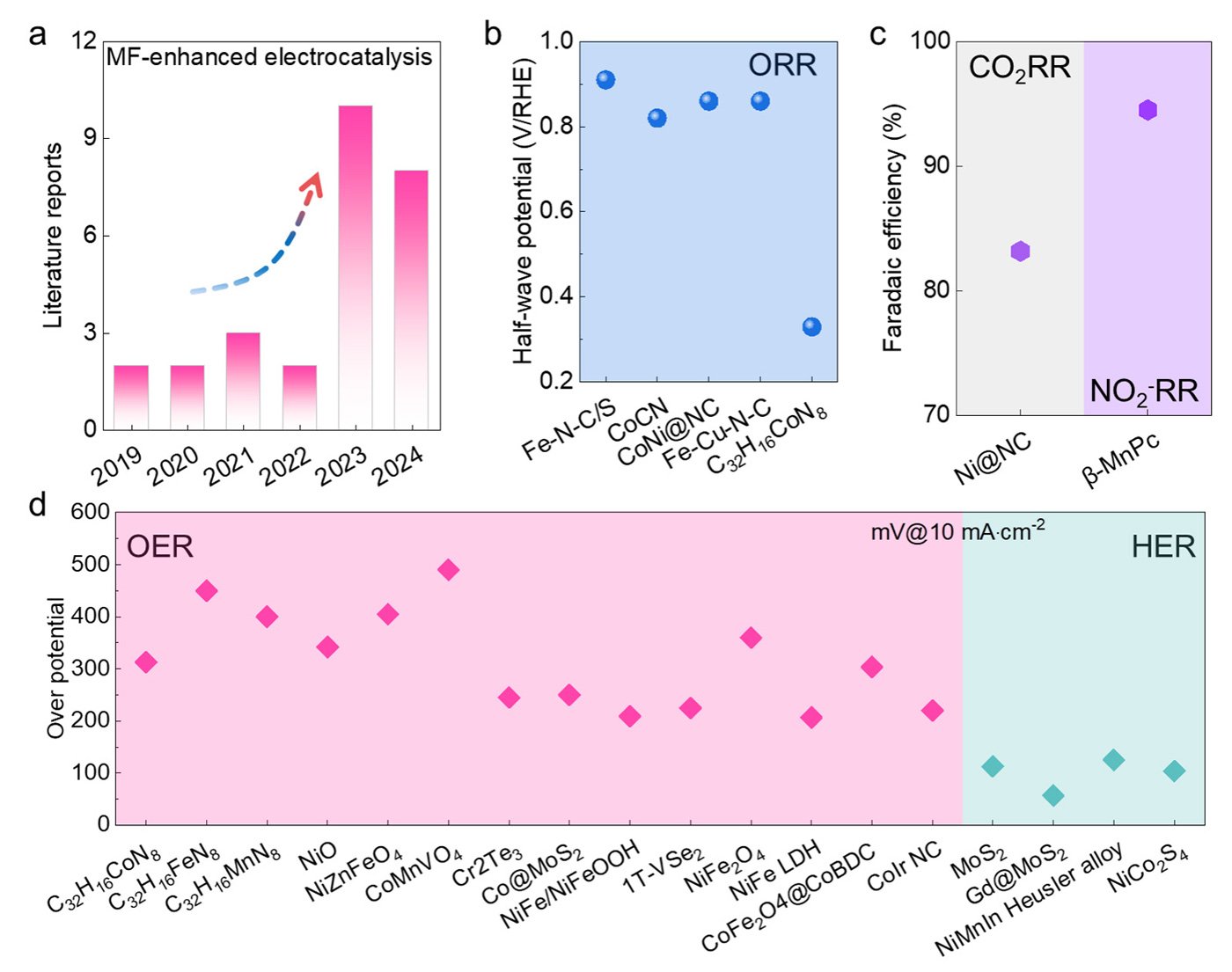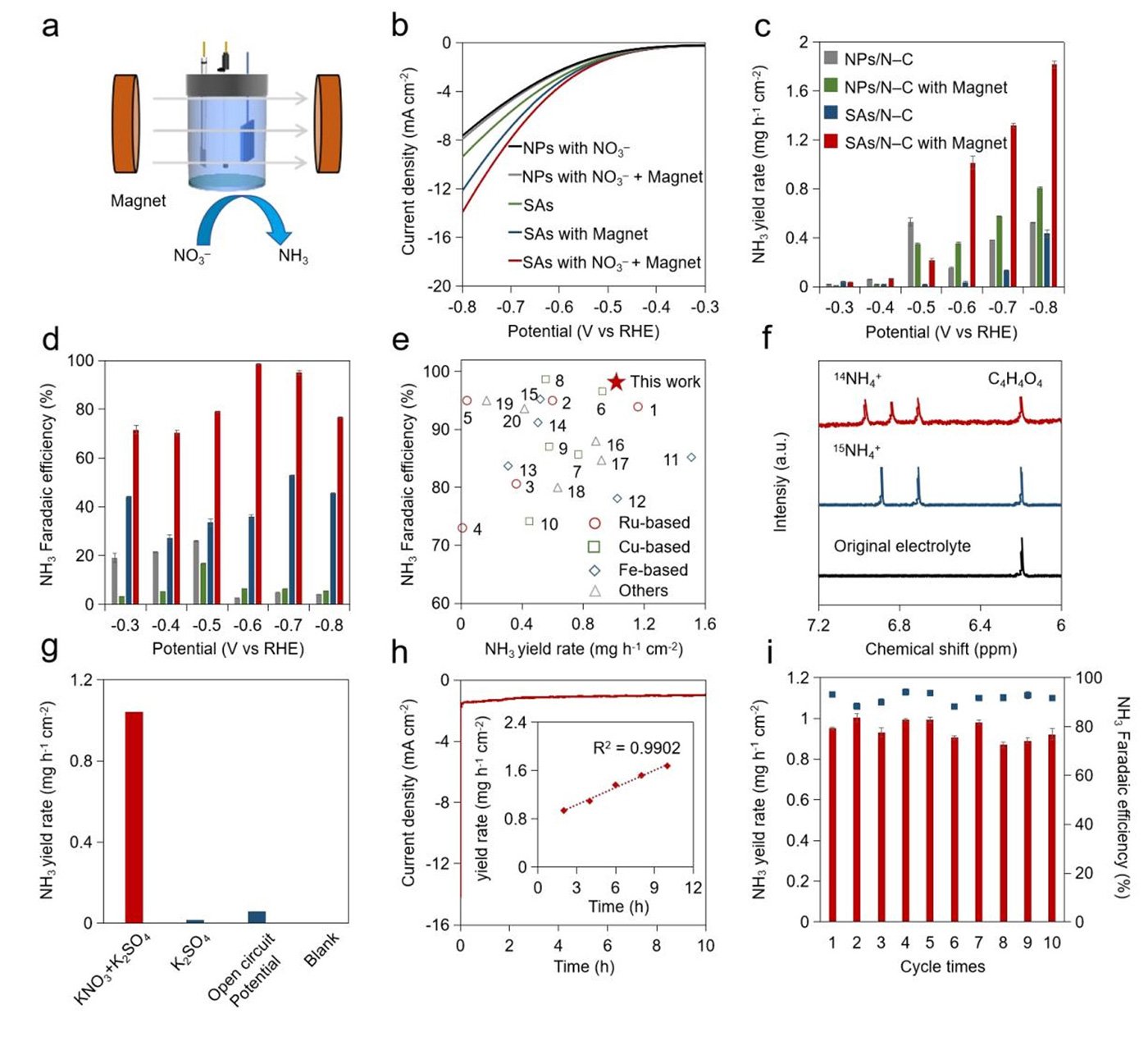The job of a catalyst is to ultimately speed up reactions, which could reduce an hour-long process into several minutes. It has recently been shown that using external magnetic fields to modulate spin states of single-atom catalysts (SACs) is highly effective - enhancing oxygen evolution reaction magnetocurrent by a staggering 2,880%.
With this in mind, researchers at Tohoku University proposed a completely novel strategy to apply an external magnetic field to modulate spin states, and thereby improve electrocatalytic performance. This study provides valuable insights regarding the development of efficient and sustainable electrochemical technologies for ammonia production and wastewater treatment.
In the field of electrocatalysis, traditional methods mainly focus on adjusting the chemical composition and structure of catalysts. The introduction of magnetic-induced spin state modulation provides a new dimension for catalyst design and performance improvement. It involves the regulation of the electronic spin state of the catalyst through an external magnetic field, which can precisely control the adsorption and desorption processes of reaction intermediates, thus effectively reducing the activation energy of the reaction and allowing it to proceed more quickly.
"More efficient production processes can reduce costs, which may translate into lower prices for products such as fertilizers and treated water at the consumer level," explains Hao Li of Tohoku University's Advanced Institute for Materials Research (WPI-AIMR).

The study used advanced characterization techniques to prove that the magnetic field causes the transition to a high spin state, which improves nitrate adsorption. The theoretical analysis also shows the specific mechanics of why the spin state transition improves the electrocatalytic ability. When exposed to an external magnetic field, the Ru-N-C electrocatalyst demonstrated a high NH3 yield rate (~38 mg L-1 h-1) and a Faradaic efficiency of ~95% for over 200 hours. This represents a significant improvement compared to the exact same catalyst, but without a boost from an external magnetic field.

Ultimately, this work enriches our theoretical understanding of electrocatalysis by exploring the relationship between magnetic fields, spin states, and catalytic performance. At the same time, the experimental results offer a reference for future research and the development of new catalysts, laying a solid foundation for the practical application of electrochemical technologies.
The findings were published in Nano Letters on May 13, 2025.
The APC fees were supported by the Tohoku University Support Program. The key findings from this study are available on the Digital Catalysis Platform (DigCat), the largest experimental and computational catalysis database to date developed by the Hao Li Lab.

- Publication Details:
Title: Magnetic Field-Induced Spin Transition in Single-Atom Catalysts for Nitrate Electrolysis to Ammonia
Authors: Xingchao You, Zhongyuan Guo, Qiuling Jiang, Junkai Xia, Suwen Wang, Xiaohui Yang, Zechao Zhuang, Yongfu Li, Hai Xiang, Hao Li, Bing Yu
Journal: Nano Letters






